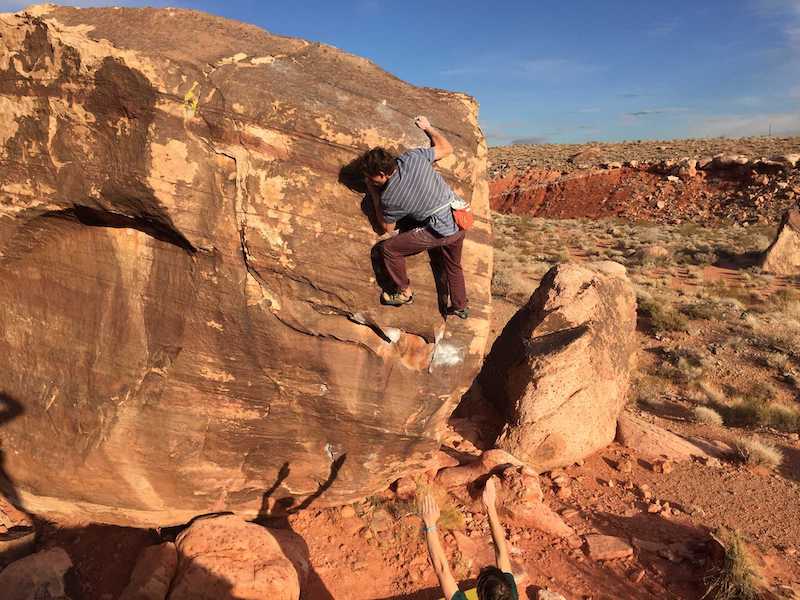Photos by Spencer Josif.
Contrary to popular belief, it DOES rain in California. But once the weather has passed, the question remains: how soon can you get back on your project?
Although the conversation around climbing after a rain is nuanced, the basic issue is that some of the most popular climbing areas around California are sandstone, including:
- Castle Rock State Park
- Most climbing areas in the Santa Monica mountains (Echo Cliffs, Malibu Creek, Malibu Boulders, etc.)
- Mt. Diablo
- Stoney Point
- Red Rock (Las Vegas, NV)

While not all sandstone is the same, generally speaking all sandstone in California and the western United States is highly porous and becomes very weak when wet.
“Sandstone is a sedimentary rock,” USGS Geologist and Touchstone member Eleyne Phillips explains. “Whereas metamorphic and igneous rocks have interlocking crystals which are not generally water soluble, water can dissolve the minerals that act as cement and hold a sandstone together. Without the cementing matrix, sandstone can easily revert to its component parts, i.e. sand, gravel and cobbles.

If you put force on sandstone while in this fragile state, it will break much easier than when dry.”
“…water can dissolve the minerals that act as cement and hold a sandstone together. […] If you put force on sandstone while in this fragile state, it will break much easier than when dry.”
Breaking holds can cause a dangerous fall, hurting the climber, the spotter/belayer, or both. It can also change a classic climb forever, sometimes significantly altering the movement or grade, or even making it unclimbable. This is an issue that many locals have documented, including climbing photographer Jim Thornburg.
View this post on Instagram
So if you don’t want to be a force of erosion, check out this handy guide:
How long do I wait?
Most sandstone climbing areas are good to climb on after 2-3 days, but 5 days to even a week is sometimes necessary for bigger storms.

How do I check if it’s too wet?
Look up the climbing location on Weather.gov. You’ll find a feature there that displays the 3-day history of the area. Three days is usually enough time for sandstone to dry out after most moderate, one-day storms.
At the climbing area, dig an inch or two into the dirt. If you see wet soil beneath dry surface soil it means that a similar situation is happening with the rock. No climbing!
And obviously if the rock is wet, you should not be climbing.

Can I climb on other types of rock shortly after a rain?
Although other types of rock might be okay to climb on post-rain, climbing on wet rock is always dangerous and should be avoided whenever possible.
And it’s worth noting that sandstone isn’t the only type of rock that’s fragile when wet. For example, Eleyne says that, “Technically, the volcanic tuff in the Tablelands in Payahuunadü (Bishop) is not a sandstone, but it is also a highly porous sedimentary rock, and can also become more fragile when wet.”
Everything is wet, what do I do now?
Barring COVID-related closures, you can always come climb at our gyms! Check out each Touchstone gym’s status and make a reservation on our COVID-19 info page.

